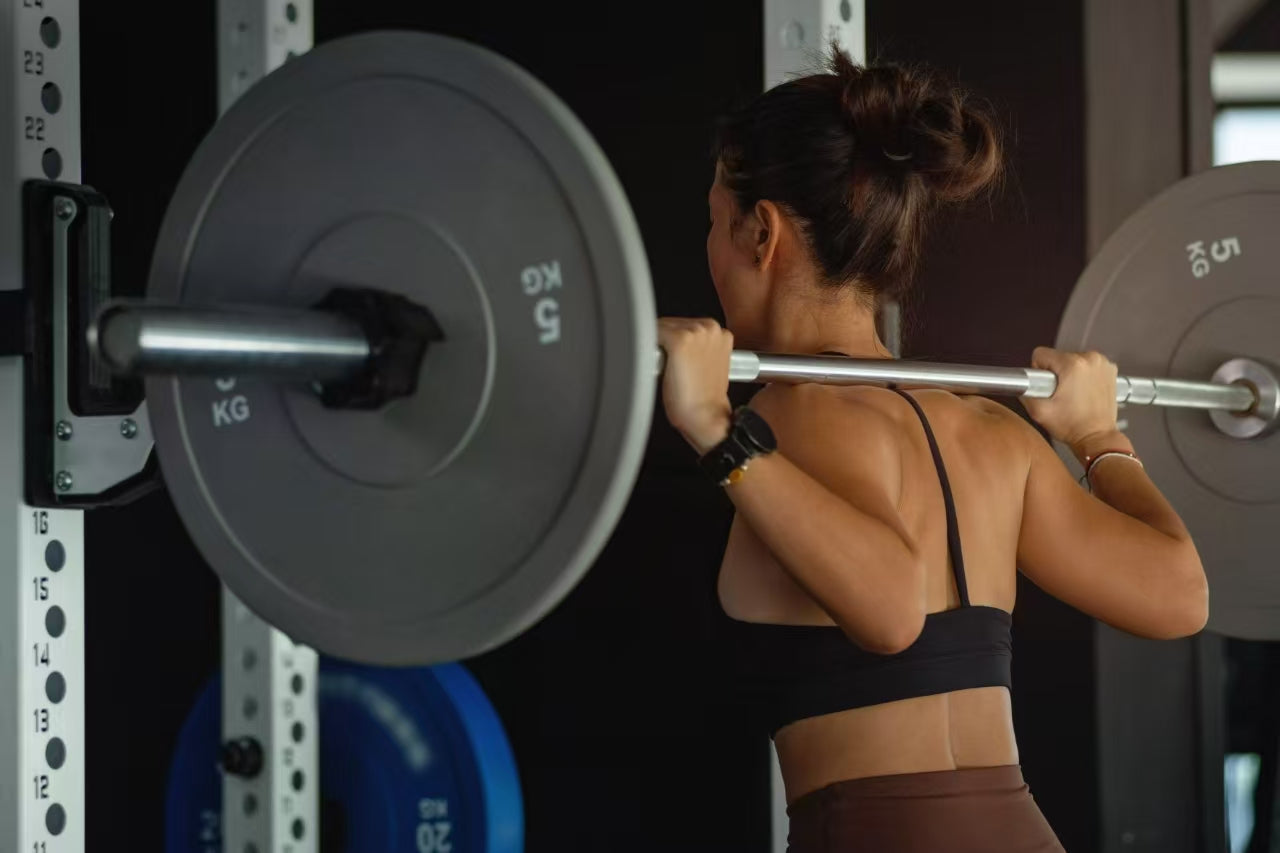
How to Prevent Weightlifting Injuries
Weightlifting is one of the most effective ways to improve fitness and build strength. However, it can also lead to serious injuries if not approached carefully. Despite its effectiveness, weightlifting requires proper technique to avoid injuries that could impact your progress.
Let’s take a look at some common weightlifting injuries, their risks and causes, and how you can prevent injuries during weightlifting training.

Most Common Weightlifting Injuries
Weightlifting is a demanding activity, and injuries often occur when lifters don't pay close attention to technique. According to a recent study, approximately 64.8% of injuries affect the knees, shoulders, and lower back.

Back Strain
- Affected Muscles: Lower back muscles
- Causes: Often caused by lifting too much weight or using incorrect posture, which puts stress on the lower back.
- Prevention: Keep your spine neutral while lifting. Start with lighter weights and gradually increase the load.
Shoulder Impingement
- Affected Area: Rotator cuff muscles and shoulder joint
- Causes: Caused by compression of tendons in the rotator cuff.
- Prevention: Strengthen your rotator cuff muscles and ensure proper shoulder movement.
Rotator Cuff Tear
- Affected Area: Rotator cuff muscles
- Causes: Repeated overhead lifting or sudden heavy lifting can damage tendons, leading to chronic or acute tears.
- Prevention: Include shoulder-strengthening exercises and avoid repetitive overhead lifting.
Bicep Strain
- Affected Muscles: Bicep muscles
- Causes: Heavy lifting or repetitive exercises like chin-ups and curls.
- Prevention: Avoid lifting heavy weights that overly rely on your biceps and incorporate strength training for your biceps.
Patellar Tendonitis
- Affected Area: Patellar tendon beneath the kneecap
- Causes: Poor knee alignment during lifting and excessive squatting.
- Prevention: Use proper form for squats and include exercises to strengthen your hamstrings and quadriceps.
Knee Injuries
- Affected Area: Ligaments surrounding the knee
- Causes: Overloading knees with heavy weights or improper squatting form.
- Prevention: Use proper form and include warm-up and cool-down exercises to maintain knee health.
Ways to Prevent Weightlifting Injuries

Start with a Solid Foundation: Proper Technique
- Learn the Basics: Master the correct form with a certified coach, especially for exercises like bench presses, deadlifts, and squats.
- Focus on Form Over Weight: Avoid lifting too much too soon; prioritize controlled and proper movement to reduce injury risk.
Warm Up Effectively
- Dynamic Stretching: Incorporate active warm-up exercises like arm circles and leg swings to prepare your muscles.
- Light Cardio: Do 5-10 minutes of light cardio to increase blood flow and flexibility.
Progress Gradually: Avoid Overloading
- Incremental Weight Increases: Gradually increase weight to avoid exceeding your body's capacity.
- Listen to Your Body: Take breaks if you feel discomfort, pain, or fatigue.
Incorporate Rest and Recovery
- Scheduled Rest Days: Allow 2 days of rest between heavy workouts to give muscles time to repair and strengthen.
- Quality Sleep: Aim for 7-9 hours of sleep to support muscle recovery.
Use Proper Equipment
- Supportive Footwear: Wear stable shoes to maintain balance and prevent ankle and knee injuries.
- Weightlifting Belt: Use a belt to support your lower back when lifting heavy weights.
- Gloves and Wrist Straps: Prevent wrist injuries and improve grip.
Maintain Balanced Training
- Full-Body Workouts: Avoid overworking specific muscles by including exercises that target all major muscle groups.
- Functional Training: Include movements that mimic everyday activities for balanced strength.
Stay Hydrated and Nourished
- Proper Hydration: Drink water before, during, and after workouts to prevent cramps.
- Balanced Nutrition: Include essential nutrients for muscle recovery and sustained energy.
Monitor Volume and Intensity
- Avoid Overtraining: Start with lower-intensity workouts and gradually increase the intensity.
- Periodization: Alternate between high and low-intensity periods to improve strength without risking injury.
Stay Flexible and Mobile
- Incorporate Stretching: Stretch regularly to maintain muscle flexibility and reduce injury risk.
- Mobility Exercises: Focus on exercises that strengthen the shoulders, ankles, and hips.
Pay Attention to Pain
- Distinguish Between Discomfort and Pain: Muscle soreness is normal, but sharp or persistent pain signals a potential injury.
- Seek Professional Help: Consult a healthcare professional for persistent or severe pain.
Conclusion
Preventing weightlifting injuries involves using proper technique, equipment, and a gradual training progression. Safety should always be a priority in your fitness journey. If you’re ever uncertain, consult a professional to ensure your approach is safe and effective.
Meet Fitnexa, your AI-driven companion that turns everyday habits into a positive, uplifting journey. From effortless meal analysis (including recipe suggestions) to personalized coaching and real-time support, Fitnexa keeps you on track toward lasting wellness — so you can stay younger, live longer.
https://apple.co/4hr8JGW





Leave a comment
This site is protected by hCaptcha and the hCaptcha Privacy Policy and Terms of Service apply.